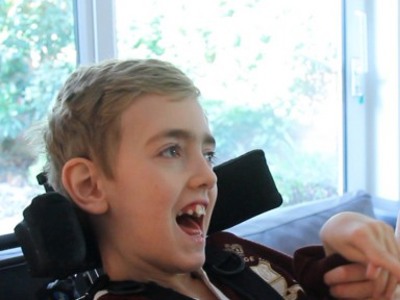
Vascular insufficiency and cerebral palsy
Contact our experienced legal team today for help
One of the causes of cerebral palsy is vascular insufficiency occurring before or during child birth.
What is vascular insufficiency?
Cerebral vascular insufficiency is defined as an impaired blood flow to the brain. A cerebral vascular accident is more commonly known as a stroke. Perinatal (defined as 28 weeks gestation to 28 days after birth) stroke is a common known cause of cerebral palsy in term and near-term infants. A stroke in the early stages of pregnancy can be particularly damaging as the brains of children, especially during the first six months of development, are particularly vulnerable.
There are different kinds of perinatal stroke that can cause cerebral palsy. Damage to brain tissue can be caused by a blockage, or by a spontaneous bleed;
- A cerebral infarction occurs when a blood vessel supplying part of the brain becomes blocked and blood leaks out of the vessel into the surrounding tissue. The loss of blood supply results in the death of the tissue and so damage to the brain. This can cause cerebral palsy.
- Another vascular event is known as intracranial haemorrhage ie spontaneous bleeding inside the brain tissue usually caused by high blood pressure. The bleeding also causes damage to the brain, which leads to cerebral palsy.
Many factors can cause an insufficient blood flow to the baby’s brain including:
- pre-existing weaknesses or abnormalities in the baby's blood vessels
- a clotting disorder or heart abnormality
- the mother having high blood pressure (pre- eclampsia)
- an infection during pregnancy, particularly pelvic inflammatory disease (an infection of the upper female reproductive organs)
- a blood clot in the placenta that blocked the flow of blood
- the second stage of labour was prolonged
- an emergency caesarean was performed
- birth asphyxia ie lack of oxygen to the baby during childbirth
Some of these factors may be pre-existing or genetic such as heart or blood vessel abnormalities, and some may develop during the pregnancy such as an infection or pre-eclampsia. But in some cases birth complications can cause interruptions in blood flow to the baby’s brain.
How is a perinatal stroke diagnosed?
A vascular event will be apparent on brain imaging. Imaging options include ultrasound, CT scan, and MRI (usually the most sensitive method).
In some cases after birth there can be tests for blood clotting disorders (if it is thought an infarction caused the bleed) or an electroencephalogram (EEG) can be done for seizures/epilepsy that may be a complication of the stroke. Neuropsychological testing can also be helpful for older children who may have problems with areas of development including learning difficulties.
Perinatal stroke can be difficult to diagnose as symptoms may not be evident in new-borns. As a child’s brain develops difficulties such as movement, seizures and cognitive ability may become more apparent.
How is it treated?
Once the damage is caused sadly it cannot be treated but it may be possible to reduce or make up for the effects of the stroke with the following assessments and/or treatment:
- Physical therapy to help movement and posture
- Assistive devices eg splints
- Botox to help relax muscles that are too tight to function
- Surgery eg to lengthen tendons to improve positioning and function of limbs
- Speech and language therapy
- A neuropsychologist or educational psychologist can test the brain’s higher functions to ascertain the individual child’s abilities and needs
- A paediatric neurologist can diagnose and help manage seizures
- There are potential new treatments but these have yet to be established:
- Restraint of unaffected limbs to promote better function in the impaired extremities
- Brain stimulation
Related content

More than £21 million secured for child who suffered cerebral palsy birth injury
A settlement of over £21 million has been secured from a NHS Health Trust for a child who sustained a serious brain injury at birth at due to negligent treatment by medical professionals.

Cerebral palsy - Felix's story
Felix was left with brain damage and permanent disability when his birth was negligently delayed.
World Cerebral Palsy Day - what is cerebral palsy and how can we help?
Today is World Cerebral Palsy Day, a global occasion to raise awareness of cerebral palsy, gather support for those with cerebral palsy and promote an understanding of their needs. Clinical negligence solicitors Sanja Strkljevic and Kriya Amin explain what cerebral palsy is and how the clinical negligence team can help.

